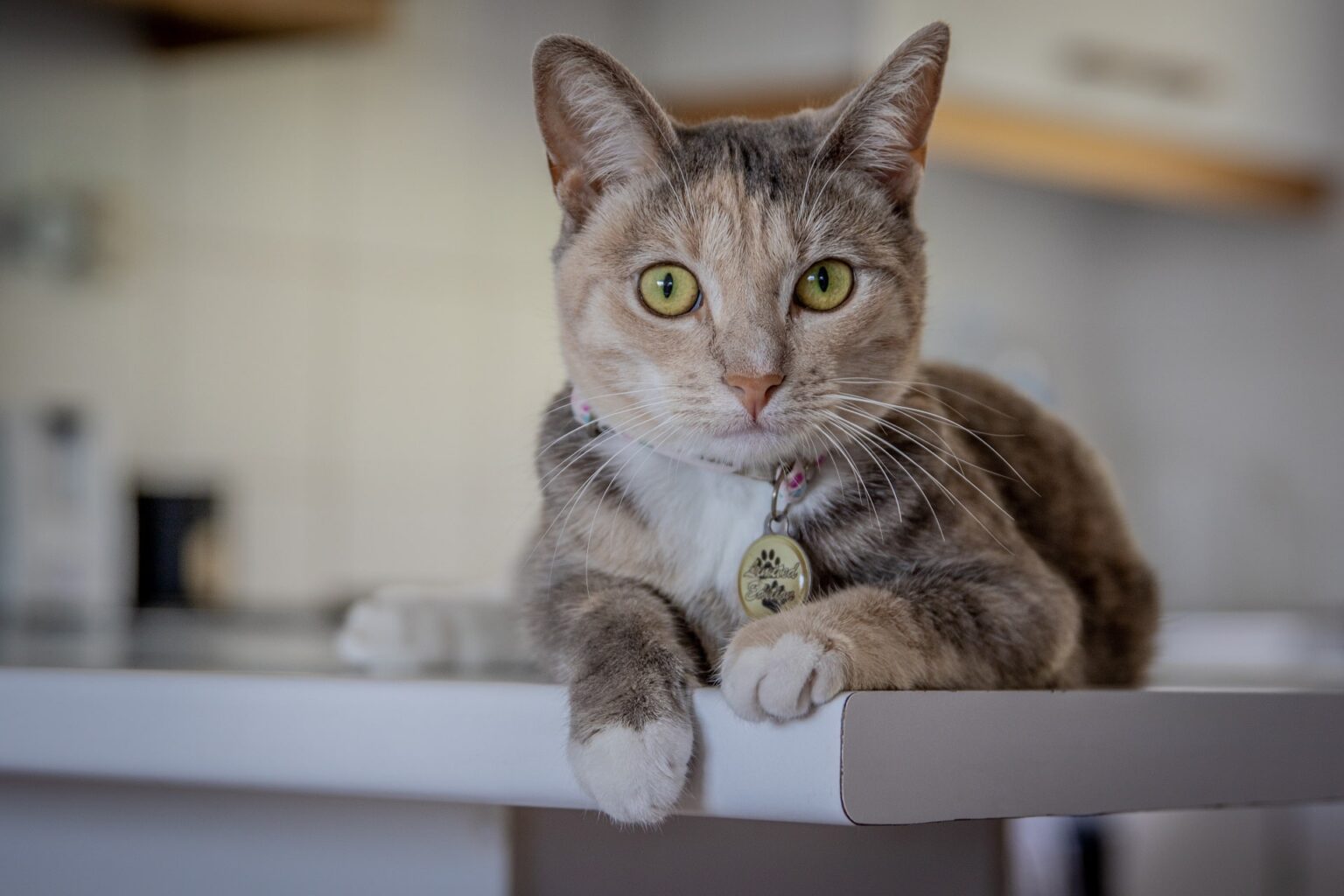Have you ever heard that if you cut your cat’s whiskers, they get lost and can’t find their way back home? Why does a cat have a mustache and what is its importance? Despite being a myth, this shows the importance of these hairs for the animal. So why do cats have a mustache?
First, let’s give the right name to these hairs, but it’s okay to call them a mustache! Vibrissae are sensory, or tactile, hairs and are part of the sense organs of mammals and fun facts about cats.
Curiosities about vibrissae
Kittens have around twelve vibrissae on each side of the cheek. The upper vibrissae move independently from the lower ones, which allows them to provide more precise information to the pet and explains why cats have a mustache.
He also has these little hairs on his chin, above his eyes, and on his front paws. Hair follicles are larger and the roots are three times deeper than those of normal hair, so they are more resistant and fall out less frequently.
The length of a cat’s mustache varies between animals and grows around 1 cm per month. It usually has the same length as the widest part of the cat’s body, but this relationship does not apply to overweight animals.
Curiosities about the vibrissae of other animals
Did you know that the leopard closes its eyes while biting its prey? This is so she doesn’t hurt his eyes. So how does it know that the prey has died? Its vibrissae embrace its prey and detect the slightest movement, even if it comes from breathing. So, when the movements stop, he opens his eyes and safely enjoys the food.
Seals don’t see very well, which is why they have long vibrissae to locate themselves underwater. Elephants, rhinos, and hippos have few vibrissae, but they still sense whether there is something near or far through them.
The bat is another animal that benefits from vibrissae. In addition to the sonar, the whiskers help it orient itself during the flight, receiving vibrations from the sounds it emits to orient itself.
Horses have several little mustaches in front of their mouths. They are also tactile hairs and help the animal better feel the terrain while grazing. If the vibrissae touch something hard, the horse avoids getting hurt.
Rabbits are natural prey animals, which is why they have their eyes positioned on the sides of their heads. This leaves a blind spot at the tip of your nose, so the vibrissae act as environmental sensors for it.
What is the function of the vibrissae?
To explain why cats have a mustache, we can list the various functions of these tactile hairs, which don’t just serve to make the cat even cuter! They make the kitten’s life easier.
As the length coincides with the width of the pet’s body, the mustache helps it to pass through gaps without getting stuck. Furthermore, the 24 wires form a type of sonar that provides information about the environment.
By vibrating, they give directions to objects ahead or prey in the dark. The vibrissae also help maintain balance, making cats jump and climb safely.
Mustaches indicate the cat’s mood!
By observing the position of the cat’s whiskers, it is possible to know whether he is calm or about to lunge. In many cases, when the vibrissae are facing backward, pressed against the cheeks, this indicates that the cat is scared and defensive. The perception of movements close to the cat, due to the lack of focus adjustment, has a difference of 30 cm away from the face.
If they are facing forward, this is a sign that he is thinking about attacking a possible prey or the leg of the owner who is passing by. If they are positioned in the center, they indicate that the cat is relaxed and ready to receive affection!
Speaking of affection, it is possible to calm a kitty by petting near the vibrissae. To do this, run your fingers over his cheeks as if you were “combing” the vibrissae backward, avoiding the mustache hairs.
In addition to all the emotional factors, recent research reveals that the position of the vibrissae can help detect pain in cats, along with observing body and facial posture.
They also indicate the kitten’s nutritional status.
Vibrissae are long, thick hairs, and any change in their quality may indicate a lack of nutrients in your cat’s diet. Therefore, always observe how they are doing.
If they are brittle and thin, with a marked drop or delay in growth, the kitten needs a consultation with the veterinarian and tests to detect what is wrong with him. Do you understand the importance of the cat’s mustache?
Can you cut a cat’s mustache?
Knowing why cats have a mustache, it’s easy to answer this question! Hair is part of an important sensory organ for your cat, and they can become depressed without it.
So, you can’t cut the cat’s mustache. Without the vibrissae, he will be disoriented and may have a lack of balance. He could misjudge a jump and get hurt or caught in a gap. Furthermore, he may become insecure, frustrated, and irritable.
If your cat’s whiskers are cut off by accident, there’s not much you can do other than wait for them to grow. As we said, they grow at a rate of 1 cm per month. Then, after 3 to 4 months, they will be useful again.




